
|
5S-HETE |
5s-hete is a lipid of Fatty Acyls (FA) class. 5s-hete often locates in Microsomes. |
666 |
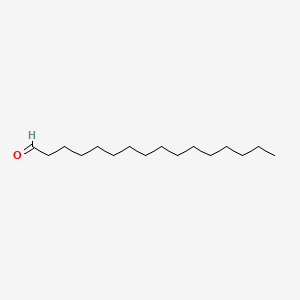
|
Palmitaldehyde |
Palmitaldehyde is a lipid of Fatty Acyls (FA) class. The involved functions are known as Palmitoylation and myristoylation. Palmitaldehyde often locates in Cell membrane. The related lipids are plasmenylcholine. |
1348 |
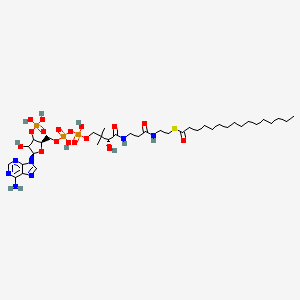
|
Palmitoyl CoA / CoA(16:0) |
Palmitoyl coa / coa(16:0) is a lipid of Fatty Acyls (FA) class. The involved functions are known as protein activation. Palmitoyl coa / coa(16:0) often locates in Protoplasm, Endoplasmic Reticulum and Microsomes. The related lipids are Sphingolipids. |
595 |
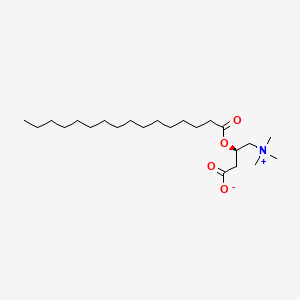
|
L-palmitoylcarnitine |
L-palmitoylcarnitine is a lipid of Fatty Acyls (FA) class. L-palmitoylcarnitine is associated with abnormalities such as Ischemia. The involved functions are known as inhibitors, Oxidation, uptake, Adjudication and Cell Death. L-palmitoylcarnitine often locates in Mitochondria, Mitochondrial matrix, Protoplasm, Cytoplasmic and Muscle. The related lipids are oleoylcarnitine, Oleates, Palmitates, 1-Butanol and Cardiolipins. |
417 |
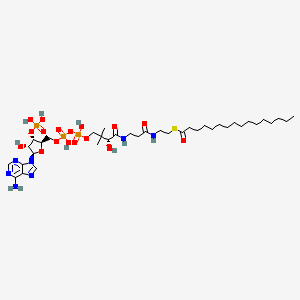
|
Palmitoyl coenzyme a |
|
291 |
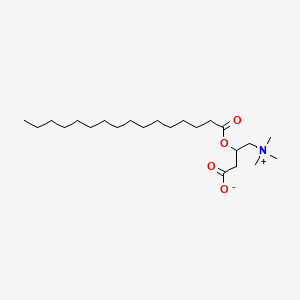
|
Palmitoylcarnitine |
Palmitoylcarnitine is a lipid of Fatty Acyls (FA) class. |
123 |

|
O-propanoylcarnitine |
O-propanoylcarnitine is a lipid of Fatty Acyls (FA) class. |
258 |

|
(e,e,e,e)-squalene |
(e,e,e,e)-squalene is a lipid of Fatty Acyls (FA) class. (e,e,e,e)-squalene is associated with abnormalities such as Hypercholesterolemia and Cataract. The involved functions are known as Process, metaplastic cell transformation, Protein Overexpression, Anabolism and Biosynthetic Pathways. (e,e,e,e)-squalene often locates in Membrane, Protoplasm, Plasma membrane, Tissue membrane and Back. The associated genes with (e,e,e,e)-squalene are Genome, IMPACT gene, GAPDH gene, GTF2I gene and Chromatin. The related lipids are Membrane Lipids, cycloartenol, Sterols, Fatty Acids and Nonesterified Fatty Acids. |
1766 |
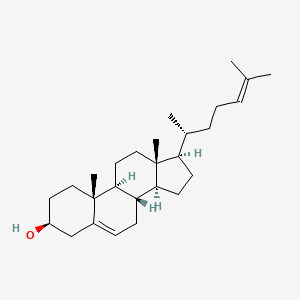
|
DESMOSTEROL |
DESMOSTEROL is a lipid of Sterol Lipids (ST) class. Desmosterol is associated with abnormalities such as Cataract, Congenital Abnormality, Liver diseases, Erectile dysfunction and Multiple congenital anomalies. The involved functions are known as Bulla, Methylation, cholesterol biosynthetic process, Process and cholesterol efflux. Desmosterol often locates in Body tissue, Tissue membrane, Plasma membrane, Pore and Endoplasmic Reticulum. The associated genes with DESMOSTEROL are P4HTM gene, SHH gene, WDR48 gene, CFLAR gene and SLC33A1 gene. The related lipids are Sterols, androstanol, Steroids, Unilamellar Vesicles and 7-dehydrocholesterol. The related experimental models are Transgenic Model and Rodent Model. |
251 |
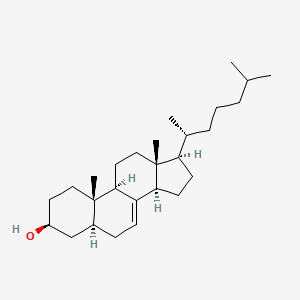
|
Lathosterol |
Lathosterol is a lipid of Sterol Lipids (ST) class. Lathosterol is associated with abnormalities such as Obesity, Diabetes, Metabolic syndrome, Cholestasis and Hypertensive disease. The involved functions are known as Increased Cholesterol Synthesis, Mutation, Synthesis, cholesterol metabolism and Insulin Resistance. Lathosterol often locates in Visceral Fat, Blood, Body tissue, Membrane and Hepatic. The associated genes with Lathosterol are apolipoprotein E-3, Alleles, ABCG8 gene, CYP7A1 gene and STN gene. The related lipids are Sterols, lathosterol, Total cholesterol, campesterol and Cholestanes. The related experimental models are Knock-out. |
203 |
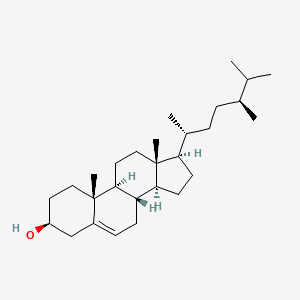
|
22,23-dihydrobrassicasterol |
22,23-dihydrobrassicasterol is a lipid of Sterol Lipids (ST) class. 22,23-dihydrobrassicasterol is associated with abnormalities such as Diabetes, Macular degeneration, Drusen, Systemic disease and Diabetes Mellitus. The involved functions are known as cholesterol metabolism, Synthesis, Intestinal Absorption, Liver function and cholesterol absorption. 22,23-dihydrobrassicasterol often locates in Back and Cell membrane. The associated genes with 22,23-dihydrobrassicasterol are apolipoprotein E-3. The related lipids are Total cholesterol, campesterol, lathosterol, Fatty Acids, Nonesterified and Cholesterol, Dietary. |
125 |
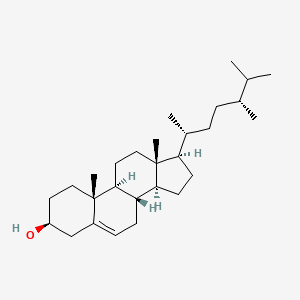
|
Campesterol |
Campesterol is a lipid of Sterol Lipids (ST) class. Campesterol is associated with abnormalities such as Still, Dehydration, Edward's syndrome NOS, Dwarfism and hypercholesterolemia. The involved functions are known as Excretory function, Physiologic Organization, Mutation, Signal Transduction and inhibitors. Campesterol often locates in Membrane, Cell membrane, Body tissue, Microsomes and Tissue membrane. The associated genes with Campesterol are Alleles, Homologous Gene, N-dodecyl-L-lysine amide, apolipoprotein E-3 and ABCG8 gene. The related lipids are Sterols, Membrane Lipids, campesterol, Fatty Acids, Nonesterified and brassinolide. |
288 |
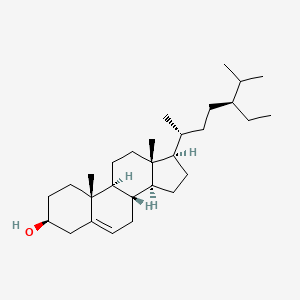
|
Clionasterol |
Clionasterol is a lipid of Sterol Lipids (ST) class. The involved functions are known as Intestinal Absorption. The related lipids are 22-hydroxycholesterol. |
711 |
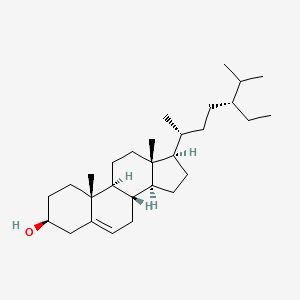
|
Beta-sitosterol |
Beta-sitosterol is a lipid of Sterol Lipids (ST) class. Beta-sitosterol is associated with abnormalities such as Obesity, Diabetes, Cholestasis, Systemic disease and Diabetes Mellitus. The involved functions are known as Increased Cholesterol Synthesis, Synthesis, cholesterol metabolism, GLUCOSE TOLERANCE and cholesterol absorption. Beta-sitosterol often locates in Blood, Back, Cell membrane, soluble fraction and Body tissue. The related lipids are Sterols, lathosterol, Total cholesterol, campesterol and Cholestanes. |
380 |
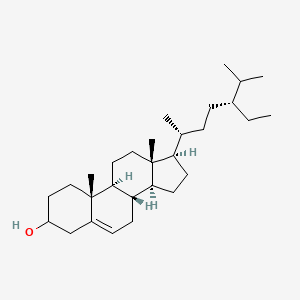
|
3beta-sitosterol |
|
234 |
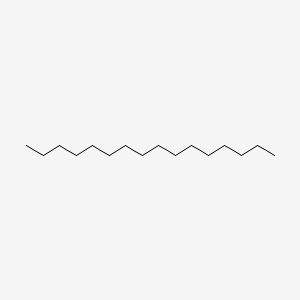
|
Hexadecane |
Hexadecane is a lipid of Fatty Acyls (FA) class. The involved functions are known as Analyte. The related lipids are Fatty Acids and palmitoleic acid. |
1835 |
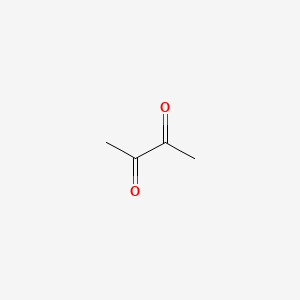
|
2,3-butanedione |
2,3-butanedione is a lipid of Fatty Acyls (FA) class. The involved functions are known as Physiologic Organization, Biochemical Pathway, physiological aspects, establishment and maintenance of localization and Phosphorylation. 2,3-butanedione often locates in Membrane, Microfilaments, Microtubules, Cell body of neuron and filamentous actin location. The associated genes with 2,3-butanedione are SLC33A1 gene and WASF1 gene. |
2715 |

|
Triolein |
Triolein is a lipid of Glycerolipids (GL) class. Triolein is associated with abnormalities such as Lymph fistula and Hyperlipidemia. The involved functions are known as Exocytosis, cholesterol transport and lipoprotein lipase activity. Triolein often locates in Mucous Membrane, Hepatic and Intestinal Mucosa. The related lipids are Cholesterol, Dietary. The related experimental models are Knock-out. |
2752 |

|
Platelet activating factor |
Platelet activating factor is a lipid of Glycerophospholipids (GP) class. Platelet activating factor is associated with abnormalities such as Atherosclerosis, Acute cholecystitis without calculus, Cholecystitis, Colitis and Cholecystitis, Acute. The involved functions are known as Cell Survival, Metabolic Inhibition, lipid oxidation, Apoptosis and Oxidation. Platelet activating factor often locates in soluble, Cellular Membrane, Smooth muscle (tissue), Intima and Tissue specimen. The associated genes with Platelet activating factor are apolipoprotein A-I Milano, Homologous Gene, TSPO gene, HBEGF gene and SLC33A1 gene. The related lipids are Hydroxycholesterols, Liposomes, 25-hydroxycholesterol, Lysophosphatidylcholines and Lipopolysaccharides. The related experimental models are Knock-out, Mouse Model and Transgenic Model. |
7383 |
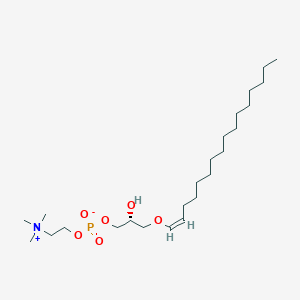
|
Lysoplasmenylcholine |
Lysoplasmenylcholine is a lipid of Glycerophospholipids (GP) class. Lysoplasmenylcholine is associated with abnormalities such as Ischemia, Congenital Abnormality and Myocardial Ischemia. The involved functions are known as membrane activity, Action Potentials, Hypoxia, Energy Absorption and Cell Death. Lysoplasmenylcholine often locates in Myocardium, Membrane, Extracellular, Axon and Sarcolemma. The associated genes with Lysoplasmenylcholine are THOC4 gene, POLE gene, SFLL and CA1 gene. The related lipids are Plasmalogens, Phosphatidylserines, Lysophospholipids, plasmenylcholine and lysoplasmenylcholine. |
76 |



















